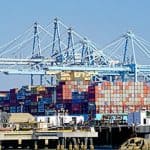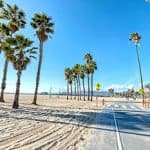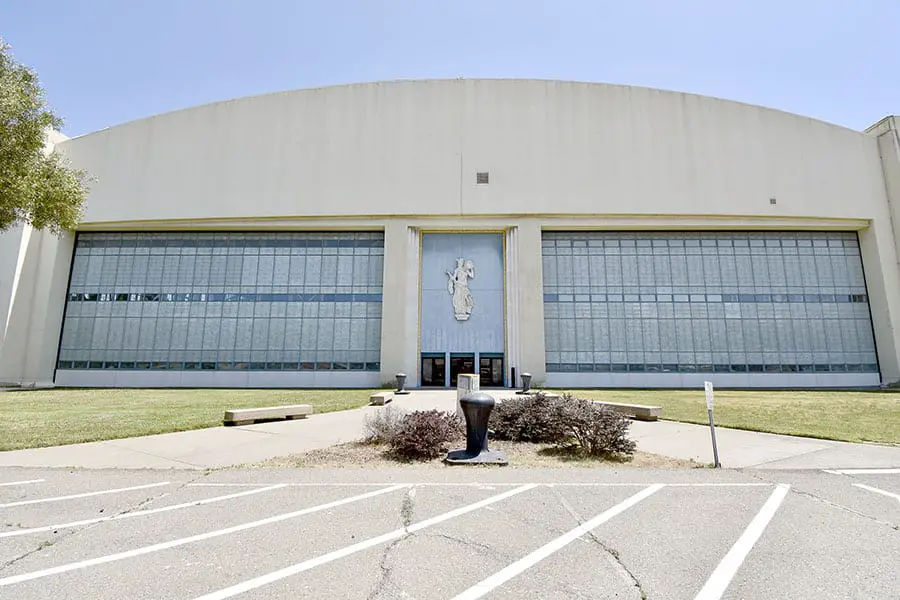
Treasure Island sounds like a fascinating place – the name rings of riches, lush tropical greenery, perhaps some unique prize for the diligent searcher. Connected to Yerba Buena Island by a causeway, this one-square-mile island in the San Francisco Bay is not a natural land mass bearing riches and gold but rather an artifact from the heady days of 1930s California. You are probably wondering what Treasure Island was used for?
As construction on the Golden Gate bridge neared completion and the Golden Gate International Exhibition approached, Treasure Island was built from the seafloor up as a “Magic Isle” for visitors. The island came complete with parking, sprawling outdoor courts, exhibit halls, and hangars for flying boats.
The exhibition has an interesting history on its own. The days of massive exhibitions like the World’s Fair and the Golden Gate International Exhibition have come and gone, and the unique flavor of that era is fascinating to behold. But Treasure Island’s storied history has so much more to offer than a glimpse into the heyday of global exhibitions. Continue on to learn more about this interesting piece of San Francisco.
Treasure Island: The Early Days
Before Treasure Island was Treasure Island, it was a submerged pile of rocks known as the Yerba Buena Shoals. With less than 27 feet of clearance, the shoals were a hazard to shipping, and they were generally avoided. In the mid-1930s, a choice was made to fill the shoals and create land. Construction crews used hundreds of thousands of pounds of quarried rock, dredged sands, and topsoil to create a radiant, tree-covered island where once there was only a navigational hazard.
Why was this decision made? In 1933, the idea began circulating that San Francisco should celebrate their brand-new bridges – the Golden Gate and the San Francisco-Oakland Bay Bridge – by hosting a World’s Fair to show off their new amenities and attract visitors to the city. Officials evaluated several sites throughout the city for use as fairgrounds. Eventually, the powers that be, settled on two options: the Presidio, previously used to host the 1915 Panama-Pacific Exposition, or an island to be built on the Yerba Buena Shoals. The Shoals won out, and in 1936, construction began.
Constructing a new island out of a hazardous shoal was an expensive and laborious process. It is challenging work to raise an island out of the sea. To help pay for the project, the Works Progress Administration pitched a $10 million proposal to bring the island up from the sea. President Roosevelt approved $3 million in federal funds for the project, and work began in earnest. Three thousand construction workers dredged, poured, blasted, leveled, and sculpted the land.
After completion, Treasure Island was used to host guests to the 1939 Golden Gate International Exposition. The island had several hangars for Pan Am flying boats, exhibit halls to display modern technologies to visitors, government centers, car parking, and a whole host of facilities needed to host such a world-class event.
Bay Area Answers Fun Fact: Pan American Airlines used Treasure Island as a base for their fleet of Martin M-130 and Boeing B-314 flying boats. Visitors to the island would sometimes be treated to the magnificent sight of these planes departing San Francisco Bay for exotic ports like Manila.
And world-class it was: the theme of the exposition was “Pageant of the Pacific,” and it was a celebration of the importance of trans-Pacific trade. Treasure Island’s midway amused visitors with rodeos and sideshow attractions such as monkeys driving little cars. Artists hosted exhibitions and workshops; special trains transported visitors from the festival to and from the city.
Fun as the expo was, it was not forever. Plans also were included to use Treasure Island as an auxiliary airport to San Francisco International (SFO) to ensure that citizens of San Francisco would benefit from the work required to build the island. Indeed, these plans pre-dated the expo, and the eventual use of the island as an airport was always part of the development plan for Treasure Island.
However, when the United States joined World War II, circumstances changed, and the Navy commandeered the island.
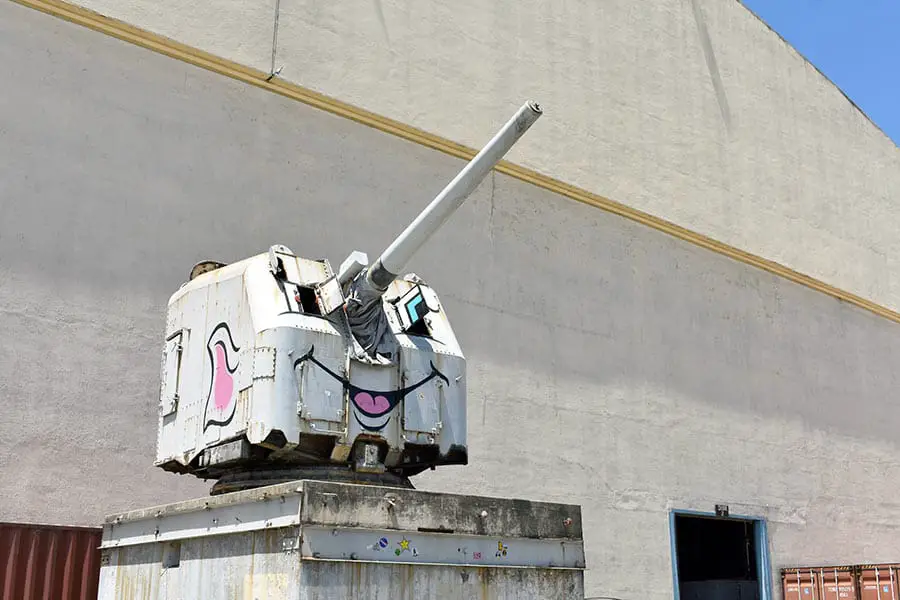
The Navy used Treasure Island to process sailors headed to the Pacific Theatre for the war and to process returning sailors for discharge. Sailors discharged for psychiatric reasons were sometimes held on Treasure Island until they were able to be released to the general public.
In addition to personnel processing, the Navy used Treasure Island as an Auxiliary Air Facility. The Navy trained pilots on how to operate fixed-wing airplanes and the island also hosted more exotic aircraft such as flying boats, dirigibles, blimps, and eventually helicopters. Sailors and Marines received training on electronics maintenance and repair, radar, communications systems, Nuclear/Biological/Chemical (NBC) decontamination, and damage control.
Other Posts of Interest
- What Is The Palace Of Fine Arts In San Francisco?
- Why Is San Francisco So Foggy?
- Are There Sharks In San Francisco Bay?
- What Is Alcatraz Used For Now?
In 1991, the Navy decided to close the naval station at Treasure Island and began decommissioning the base. Military activity on Treasure Island had left some degree of contamination from nuclear/biological/chemical warfare training activities. EPA testing found that there were levels of isotopes such as Cesium-137 that were unsafe for human exposure. The Navy had previously hosted warships from the Bikini Atoll nuclear tests and hosted many NBC training activities that had left some radioactive components on the island.
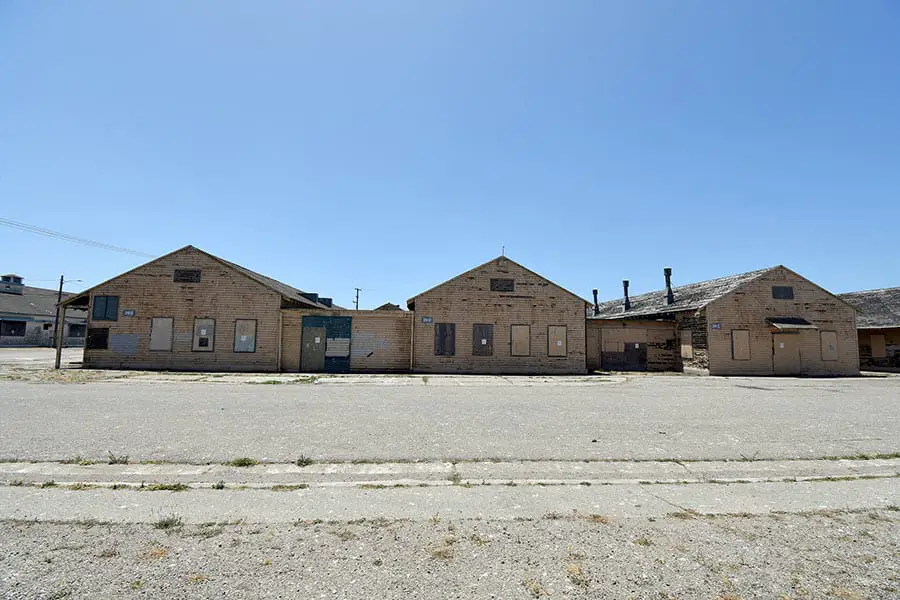
The Navy did attempt to remediate this pollution and remove all of the radioactive material, filling the land with uncontaminated dirt from other construction projects. Despite these efforts, there are still concerns that Treasure Island may have radioactive isotopes in the soil.
Today Treasure Island is in a new phase, and it is growing into a vibrant new residential community.
How Did They Build Treasure Island?
Before they built the island, the location of Treasure Island was mainly just a hazardous, rocky shoal. To convert this to an island, engineers needed to fill the waters around the shoal. They began by dumping thousands of tons of rocks into the shoals to create a foundation for the island. After dumping rocks onto the seafloor to build up the foundation, workers began dredging parts of the bay and dumping the sand onto the rocks. The sand effectively filled gaps between the stones, and with some tamping and leveling, created a base on which turf could be laid.
Following this, good soil was applied over the base, and grasses, trees, and other plants were laid onto the turf to generate a root system, and Treasure Island had risen from the bay.
How Big is Treasure Island?
Treasure Island is about 576 acres in total, just shy of one square mile. It is not a huge island – it would be fairly trivial to take a stroll around the island and enjoy the views of the city. By comparison, San Francisco is about 48 acres in total. The island sits low to the bay; because it was formed by man and not by the forces of geology, it is only about ten feet above sea level.
Is Treasure Island Accessible by the Public?
Yes, Treasure Island is accessible to the public. Treasure Island is connected to the main mass of San Francisco and to Yerba Buena Island by a causeway. During its days as a naval station, the island was not readily accessible to the public. Currently, the City of San Francisco owns the island, and it is publicly accessible.
Why is it Called Treasure Island?
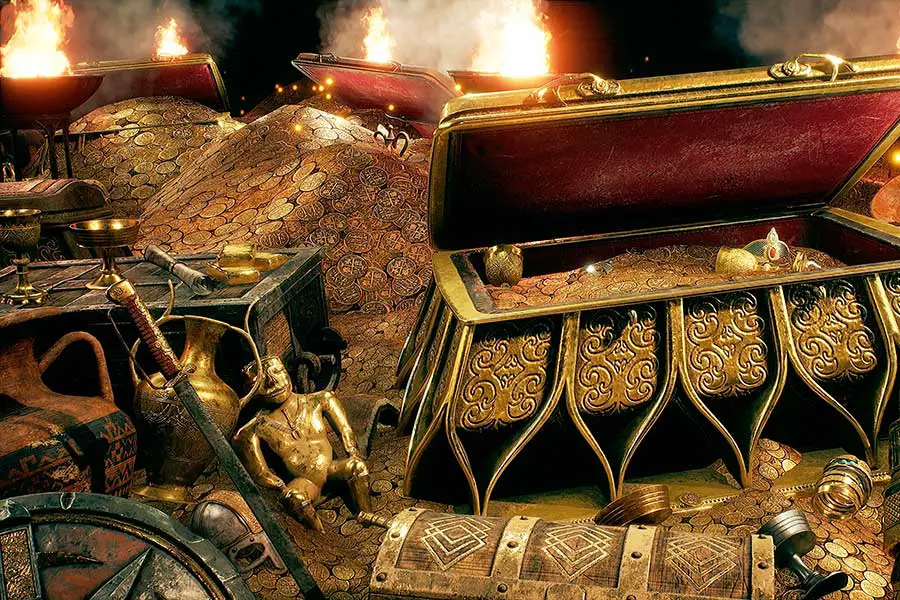
One might assume with a name like Treasure Island that the island contained a multitude of resources or perhaps was involved with piracy or other treasure-obtaining activities. Knowing that this island was built in the 1930s and therefore has neither natural resources nor a history of piracy, this is obviously not the origin of the name.
As it happens, the island was named after the 1883 story by Robert Louis Stevenson about pirates, adventures, and buried gold. California’s rich history of gold mining, plus the original intended purpose of the island as a place to display the treasures of modern civilization, made the name Treasure Island a natural choice for this place.
Has Treasure Island Ever Been in the Movies?
Treasure Island has appeared on both the silver screen and on television. The large hangars on Treasure Island, formerly used to house naval aircraft, make excellent sound stages and are frequently used for filming. Films such as Patch Adams, Flubber, The Parent Trap, The Matrix, The Pursuit of Happyness, and Indiana Jones and the Last Crusade. Many TV shows filmed segments on the island, including Mythbusters and Trauma.
The Real Treasure is the History We Learned Along the Way
Treasure Island is a unique place in San Francisco. Born from the hands of humanity instead of being formed by natural processes, the Island has been used for everything from celebrations of human industry and progress to military activity to Hollywood magic.
Learning about Treasure Island’s history helps us understand more about the history of San Francisco and the world around us. And maybe, in the end, learning about this fascinating place’s history is the real treasure on this island.


